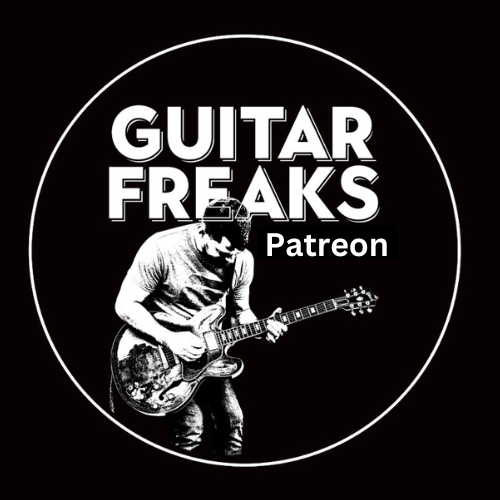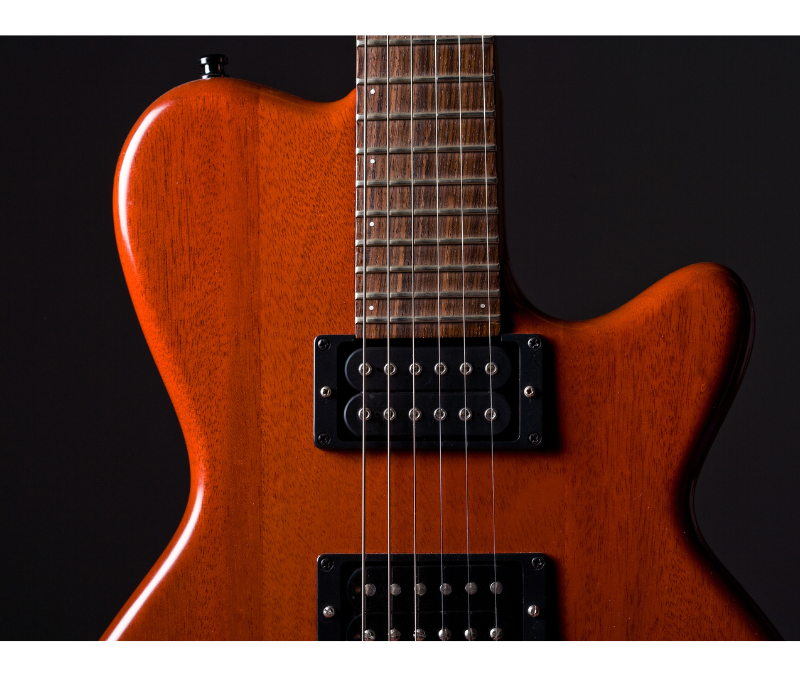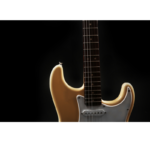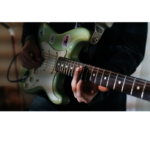Improvising on Guitar: 7 Creative Ways to Jam with Backing Tracks
Improvising on guitar with jam tracks is one of the most effective ways to sharpen your skills, experiment with new ideas, and push the boundaries of your creativity. Whether you’re a beginner still finding your footing or a seasoned player searching for new inspiration, jam tracks can transform your practice routine.
When you improvise with backing tracks, you’re practicing real-time musical thinking—developing phrasing, timing, and the confidence to let ideas flow. In this guide, we’ll cover 7 powerful ways to make your improvising on guitar more creative and expressive, no matter your skill level.
1. Use the Pentatonic Scale as a Launchpad
The pentatonic scale is the classic starting point for improvising on guitar. Its five-note simplicity makes it easy to grab onto while still offering plenty of melodic colors.
👉 Try this: Pick a jam track in A minor and solo using the A minor pentatonic. Focus on bending notes, adding slides, and creating short phrases.
How to expand:
- Blend Major & Minor Pentatonics for bluesy contrast.
- Connect the five pentatonic boxes to unlock the whole neck.
Jam Tracks Tip: Look for blues or rock backing tracks on YouTube or Ultimate Guitar.
📘 Want to master every pentatonic scale in every key? Download the FretDeck & Pentatonic Secrets Course to learn 60 scales, 6 chord progressions, and 6 improvisations designed to level up your solos.

❌ Stop Guessing. Start Shredding.
If you’re still fumbling through scale patterns and box shapes… it’s costing you progress.
FretDeck™ is the no-fluff system that shows you exactly how to master the fretboard—fast. Early access.
⚡️ This isn’t for dabblers. It’s for players who want results.
👉 Click here to download now
Early access. Limited rewards. Don’t wait.
2. Incorporate Modes for Unique Flavor
Once you’re comfortable with pentatonics, step into the world of modes. Dorian, Phrygian, and Mixolydian instantly add color and expand your vocabulary.
- Dorian = jazzy smoothness over minor progressions
- Mixolydian = perfect for dominant 7th grooves and bluesy riffs
- Phrygian = darker, exotic sound ideal for rock or metal
Pro Tip: Try a fusion jam track and switch modes mid-solo to emphasize harmonic changes.
3. Experiment with Rhythmic Variations
Improvising on guitar isn’t just about note choice—it’s how you play them. Rhythmic play transforms simple ideas into engaging solos.
Experiment with:
- Syncopation (accenting off-beats)
- Triplets for swing or shuffle feels
- Space & silence to let the track breathe
Funk, Latin, or groove-heavy jam tracks are perfect for practicing rhythm.
4. Target Chord Tones for Melodic Soloing
Want your improvising on guitar to sound professional and intentional? Target chord tones (root, 3rd, 5th) as the harmony changes.
👉 Practice arpeggios of each chord in the jam track’s progression.
👉 Outline the harmony instead of just “floating” in a scale.
The result: solos that feel connected to the music instead of random notes.
5. Use Call and Response
Think of improvisation as a conversation. Play a short phrase (the call), leave space, then answer with another (the response).
- Start with 3–5 note phrases.
- Change rhythm or pitch on the response.
- Slowly build longer exchanges.
Slow blues or soul jam tracks are ideal for practicing this conversational style.
6. Explore Dynamics and Tone
Improvisation shines when you control feel, not just notes. Dynamics and tone bring emotion into your playing.
- Play softly for intimacy, harder for intensity.
- Use your guitar’s volume knob as an expression tool.
- Switch between pickups for tonal variety.
Clean or acoustic jam tracks are perfect for focusing on dynamics.
7. Add Chromatic Passing Notes
Chromatic notes—tones that “pass through” between scale notes—add tension, jazziness, and surprise.
👉 Example: Sliding from C to D with a quick C♯ in between.
Use them sparingly to avoid clashes, and practice over jazz or funk jam tracks for maximum freedom.
Conclusion: Make Every Jam Session Count
Improvising on guitar with jam tracks is one of the most rewarding ways to grow as a musician. By mixing scales, exploring rhythm, targeting chord tones, and experimenting with tone and dynamics, you’ll not only improve your skills but also develop your unique voice on the guitar.
🎸 Next step: Join the Guitar Freaks Patreon to share your jam sessions, trade ideas with other guitarists, and get feedback that accelerates your growth. Let’s jam, create, and get better together.

🎸 Join the Guitar Freaks Patreon!
Get SoloCraft E-Book FREE!
Join Guitar Freaks on Patreon and instantly unlock my full e-book SoloCraft—your step-by-step guide to fretboard mastery and crafting soulful solos.
New video lesson drops every Friday so you’ve always got a fresh, focused practice plan for the week.
👉 Don’t miss out—join now and grab your free copy!










